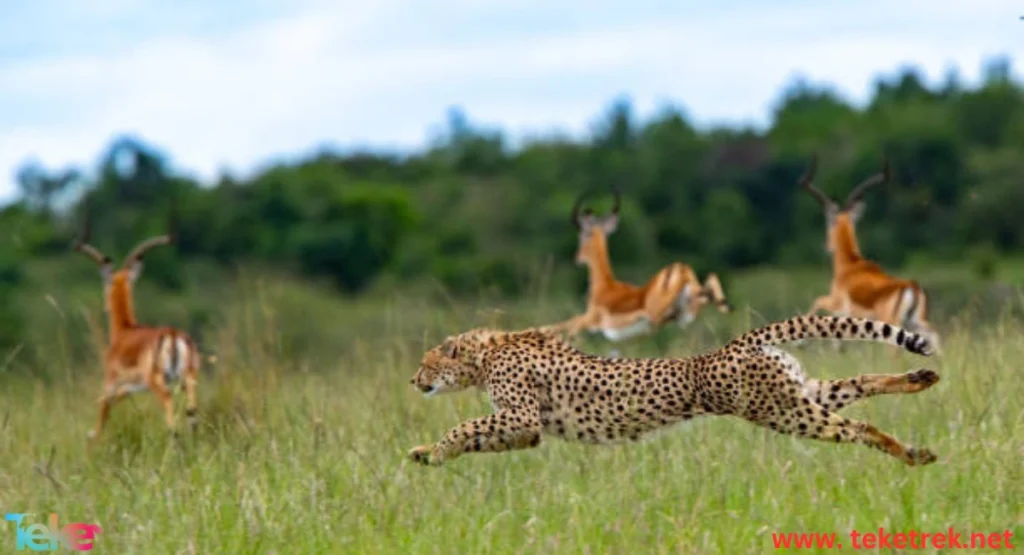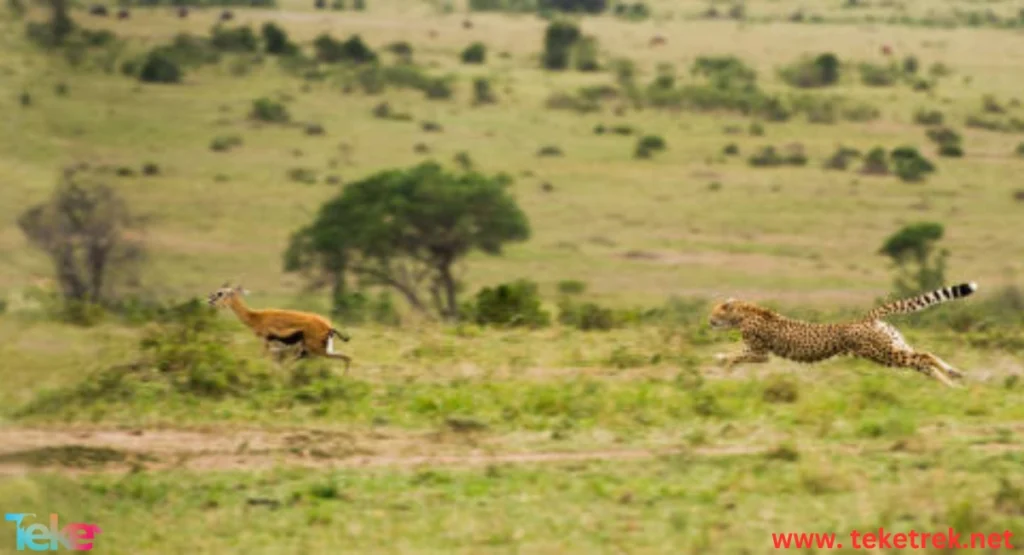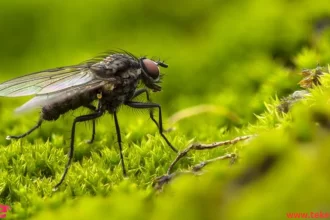Cheetahs are among the most prominent predators in the world. They are known for their exceptional hunting skills and remarkable speed when chasing prey. Often referred to as “silent stalkers,” cheetahs have unique and efficient hunting techniques. Their elegant appearance, soft fur, and slender build allow them to sprint rapidly after their prey. Cheetahs are carnivores that feed on fresh meat such as deer, rabbits, goats, sheep, buffalo, and even cattle. They are classified as the fastest land animals on Earth. Here are the details in this article from teketrek.
How Do Cheetahs Hunt Their Prey?
Cheetahs are considered among the most skilled wild animals when it comes to hunting. Their superior hunting ability is attributed to several unique traits and advantages:
- Cheetahs can reach speeds between 112 to 120 km/h (70 to 75 mph), but only for short distances of up to 460 meters (about 1,510 feet).
- They can accelerate from 0 to 103 km/h (64 mph) in just three seconds, making them faster than most high-performance cars.

Cheetahs’ Hunting Strategies: Stalking, Chasing, and Pouncing
Cheetahs use specific and intelligent strategies to catch their prey:
- Chasing: They often go after herbivorous animals because of their tender, fatty meat.
- Stalking: Cheetahs sneak up quietly on medium-sized prey like gazelles and young animals by using tall grass and natural cover.
- Pouncing: Once close enough, cheetahs attack with lightning speed, using their tails for balance, sharp claws, and powerful jaws to bite the neck of the prey and kill it quickly. They usually eat as fast as possible before larger predators like lions and hyenas can steal the kill.
How Do Cheetahs Use Sight and Hearing During a Hunt?
Cheetahs rely heavily on both their vision and hearing when hunting:
- Hearing: They can hear prey sounds from up to 30 meters away, allowing them to sneak up and chase their targets effectively.
- Sight: Cheetahs spot prey from up to 10 meters (33 feet) away, even when the prey is partially hidden in grass or brush.
Solo vs. Group Hunting in Cheetahs
Cheetahs may hunt alone or in groups, and the style depends on their environment:
- Solo Hunting: Involves stealth, speed, and surprise to catch and eat the prey quickly.
- Group Hunting: Typically involves targeting larger prey such as buffalo and cattle, requiring more coordination and effort.
The Role of Environment in Cheetahs’ Hunting Success
The natural environment plays a crucial role in cheetahs’ hunting ability:
- Cheetahs need open natural spaces to sprint after prey.
- The environment provides a diverse supply of animals, which serves as food for the cheetah.
How Do Cheetahs Protect Their Kill?
Cheetahs use special tactics to preserve their food:
- After a successful hunt, they eat quickly and may store leftover meat on tree branches to keep it away from scavengers like hyenas.
- However, leopards pose a threat since they can also climb trees and steal the stored meat.
https://teketrek.net/en/best-feeds-for-birds-and-reptiles/
Factors That Affect Hunting Success in Cheetahs
Several challenges can hinder a cheetah’s ability to hunt successfully:
- Poaching and illegal trade of cheetah parts.
- Human-wildlife conflict in expanding urban areas.
- Habitat loss due to deforestation and land development.
Cheetahs vs. Other Predators: A Comparison
Cheetahs have a distinct hunting style compared to other predators:
- Hunt mainly during nighttime, dusk, or early morning.
- Approach their prey silently and then launch a sudden, high-speed attack, often letting out a loud sound to intimidate the prey during the final moments.

How Do Cheetah Cubs Learn to Hunt?
Young cheetahs develop hunting skills from an early age:
- Cheetah cubs learn by watching their mother hunt over a period of 1.5 to 2 years.
- The mother often lets the cubs eat first to teach them that hunting is the key to survival.
- After becoming independent, cubs either stay in small groups or eventually hunt alone based on their individual skills.
https://teketrek.net/en/did-you-know-that-bees-can-recognize-faces-like-humans-discover-the-scientific-secret/
Impact of Habitat Loss on Cheetahs’ Hunting Ability
Habitat destruction has a severely negative impact on cheetahs:
- Shrinking habitats lead to starvation and weakened health due to lack of prey.
- Long-term effects include population decline and possible extinction.
Do Cheetahs Ever Fail to Catch Prey? Causes and Challenges
Cheetahs face numerous challenges that can lead to failed hunts:
- Loss of natural prey due to human activity.
- Illegal wildlife trade and the threat of stronger predators like hyenas that often steal their catch.
- Environmental degradation that limits their ability to run and hunt effectively.
How Can We Protect Cheetahs in the Wild?
To ensure the survival of cheetahs in the wild, several actions can be taken:
- Environmental organizations implement rehabilitation programs to recreate safe habitats for cheetahs.
- Global efforts are in place to preserve natural habitats such as savannahs and open grasslands crucial for cheetah survival.
Conclusion
The cheetah is a skilled predator and a symbol of speed, agility, and survival in the wild. With its ability to adapt to forests and deserts alike, the cheetah exemplifies how an animal can thrive through specialized hunting techniques. However, conservation efforts are critical. Protecting their habitats and ensuring a stable food supply are essential steps to preserve this magnificent creature for future generations.





